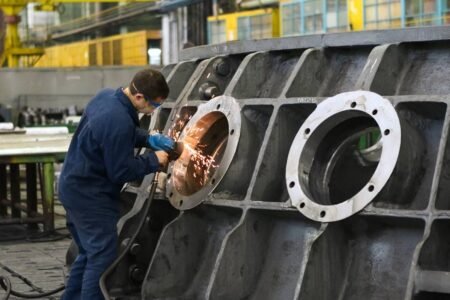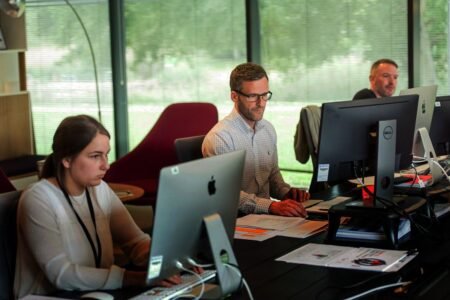The European Commission has launched a flagship initiative ‘An Agenda for new skills and jobs’. This sets out 13 key actions aimed at reforming labour markets, upgrading skills and matching them with market demand to boost employability and make it easier to move jobs, to improve working conditions and job quality, and to create jobs.
Advertisement
What is the main goal of the flagship?
The main goal is to achieve by 2020 an employment rate for women and men of 75 % for the 20-64 years age group. This objective is one of the five headline targets of the Europe 2020 Strategy for smart, sustainable and inclusive growth. The ‘Agenda for new skills and jobs’ will boost inclusive growth by raising the employment rate with more and better jobs, helping people of all ages anticipate and manage change by equipping them with the right skills and competences, modernising labour markets and welfare systems, and ensuring the benefits of growth reach all parts of the EU. At the same time EU employment policies must help shape the transition to a green economy.
To achieve these objectives, the Commission is proposing actions across 4 main areas: To make Europe’s labour markets function better, equip people with the right skills for employment, improve job quality and working conditions, and create jobs.
Why do we need an employment rate of 75%?
75% is estimated to be full employment. Today, with declining fertility rates, the EU working age population (15-64) will start shrinking as early as 2012. Not counting any migration effects, the EU’s working-age population would shrink by 12 % in 2030 and by 33 % in 2060 compared with 2009, putting our social model and welfare systems at risk. To make them future-proof, more people need to get into work. Everybody who wants to get a job should be able to do so, reaping the benefits that having a job brings with it.
What are the main actions?
* With the flagship the Commission proposes 13 key actions:
* In 2011 give new momentum and strengthen the four components of flexicurity, with a stakeholder conference between the Commission, Member States, the European Parliament and social partners.
* In 2011, the Commission will present a Communication on the implementation of lifelong learning strategies and competence development, a European policy handbook setting out a framework for lifelong learning implementation; and a renewed action plan for adult learning.
* Hold as of 2011 a Tripartite Social Forum to enhance the social partners’ participation and ownership of the Agenda for New Skills and Jobs.
* As of 2012, produce an EU Skills Panorama to improve transparency for jobseekers, workers, companies and/or public institutions. The Panorama will be available online and contain updated forecasting of skills supply and labour market needs up to 2020.
* By 2012, complete in all European languages the European Skills, Competences and Occupations Classification (ESCO), as a shared interface between the worlds of employment, education and training.
* In 2012, to consider presenting a legislative initiative to reform the systems for the recognition of professional qualifications, on the basis of the evaluation of the Professional Qualification Directive.
* In 2011, launch the second phase of the Common Agenda for Integration of third country nationals, to provide improved structures and tools to facilitate the exchange of knowledge, and the mainstreaming of integration priorities of the Member States
* In 2012, to consider presenting a legal instrument on enforcement of rights of EU migrant workers in relation to the principle of free movement of workers.
* In 2011, propose an amendment to review the Working Time Directive, and make a legislative proposal aiming at improving the implementation of the posting of workers directive.
* In 2011, undertake the final evaluation of the EU Strategy 2007-2012 on Health and Safety at Work, and on this basis propose in 2012 a follow-up Strategy for the period 2013-2020.
* In 2012, review the effectiveness of EU legislation in the area of information and consultation of workers, as well as EU directives on part-time work and fixed-term contracts and their impact on female participation in employment and the equal pay.
* By 2014, conduct a comprehensive review of health and safety legislation in partnership with Member States and the European social partners, in the framework of the Advisory Committee on Safety and Health at Work.
* In 2011, the Commission will propose guiding principles to promote enabling conditions for job creation. These will include ways to: i) address administrative and legal obstacles to hiring and firing, to creating new businesses and to self-employment; and ii) reduce non-wage labour costs; iii) move from informal or undeclared work to regular employment
Who is going to put into practice all the actions?
The main responsibility and instruments in the area of employment policy lies with the Member States. However, the 75% EU employment rate target will only be achieved by pooling all efforts and instruments. While the flagship initiative sets out mainly the EU-level actions to reach the employment target, many of the proposed actions will involve Member States as well as social partners. Implementation will be based on a mix of EU policy instruments, including legislation, policy coordination, social dialogue, funding and strategic partnerships.
How does the flagship relate to the other parts of the Europe 2020 Strategy?
The Agenda is complemented by other EU initiatives including the Europe 2020 flagship ‘Youth on the Move’ and the ‘Strategy for equality between women and men 2010-2015’. More importantly, many of the policy areas of this Agenda, such as job creation, depend on and are only part of – the integrated approach of the Europe 2020 strategy.
How will the flagship initiative support the move towards a low-carbon economy?
More efforts to anticipate future skills needs help us define which skills are needed to help us move towards a low-carbon economy. This requires both very specific skills and competences, for example in the area of energy efficiency, and at the same time also skills that across the board help us make our way of working ‘greener’.
The flagship also proposes actions to strengthen the role of public employment services. They can play a key role in providing people with information, guidance, as well as matching services and training to make use of opportunities arising from the move towards a low-carbon economy.
How long is this flagship valid for does it cover the period up to 2020?
The Commission will revise the Agenda’s priorities in 2014, and adapt them to the new Multiannual Financial Framework. Till then, it will report on progress in the Annual Growth Surveys within the Europe 2020 strategy.
What financial resources does the EU have to support the flagship?
The European Social Fund (ESF) can support many of the actions proposed in this flagship, including the design of better policies such as active labour market measures and lifelong learning and support institutions such as public employment services. It can also support forecasting of skills needs and developing qualifications and competences, or reforming education and training systems to strengthen their labour market relevance. Social partners can also be supported by the ESF through partnerships for reform in employment.
Both the ESF and the recently created Microfinance Facility (MFF) will help to help create jobs, making up to 45000 loans available over the coming eight years to help people set up their own businesses.
The Commission’s Lifelong Learning Programme, which includes support for mobility through Erasmus (higher education), Leonardo Da Vinci (vocational education and training), Comenius (schools) and Grundtvig (adult education), as well as the Marie Curie Actions (researchers), will also contribute to the objectives of the Agenda.
In 2008 the Commission launched the ‘New Skills for New Jobs’ initiative. How does this relate to the flagship ‘An Agenda for New Skills and Jobs’?
The ‘New Skills for New Jobs’ initiative launched in 2008 set out the Commission’s agenda for better skills upgrading, anticipation and matching. It started the processes of regular forecasts of labour demand and supply, and better tools to match people’s skills and jobs on the labour market. The initiative is ongoing and will be continued in the future. Despite the similarities in names, the flagship is much wider and includes flexicurity, job quality and working conditions and job creation. Skills development forms one of the 4 main areas of the flagship.
How will the NS&J initiative help SMEs?
Many of the actions proposed in the flagship will help SMEs, starting with the SME performance review. Within this we propose to assess future skills needs in micro and craft(-type) enterprises, so that their needs can be better taken on board in EU policy initiatives. The proposals improving the conditions for job creation will also help SMEs, as they will address administrative and legal obstacles to hiring and firing, to creating new businesses and to self-employment. They will deal with the question of non-wage labour costs, and promote a move from informal or undeclared work to regular employment. Our proposals on lifelong learning, in particular the focus on incentives to make it more attractive for individuals and businesses alike to invest in skills development will lead to better-qualified staff in SMEs. Finally, Erasmus for Young Entrepreneurs is another tool that will be open to SMEs and support their development.
Will the “open ended contractual arrangement” be an obligation for Member States? How will it work?
No, the “open ended contractual arrangement” will not be an obligation for Member States but an option that they could explore for inclusion in their national labour legislation. Temporary contracts should remain possible although they should be limited to genuinely temporary tasks (i.e. seasonal work, production peaks related). Thanks to the probation period and gradual increase of protection rights of the employee, the open ended contractual arrangement could become the normal mode of recruitment so that the burden of flexibility would no longer fall disproportionately on temporary workers. The difference between those benefiting from a stable permanent contract and those in precarious situations under temporary contracts would progressively diminish.
When will I be able to consult the EU Skills Panorama?
The EU Skills Panorama will be available in 2012. Currently there is no single entry point to easily access information on skills needs. The Panorama will change this. It will bring together different sources from EU, Member State, and sectoral level on current and future skills needs. It will provide users with more transparency on which skills to invest in and that are most relevant on the labour market.
The Communication proposes further labour market reform. How can Member States do this given the need for fiscal consolidation?
The proposals for reform are based on the concept of flexicurity. Discussions on the budgetary impact of flexicurity policies should not be exclusively focused on expenditure levels but also on the implications it can have for growth, employment and productivity. Hence, the positive effects of labour market policies on domestic demand, quantity and quality of employment and adaptability to change should be a central criterion for assessing their cost-effectiveness. The cost of non intervention can be higher, at least in the medium term, in terms of depreciation of human resources, unemployment persistence and reduction in consumers’ demand.
An Agenda for new skills and jobs: A European contribution towards full employment – Communication
Source: European Commission







